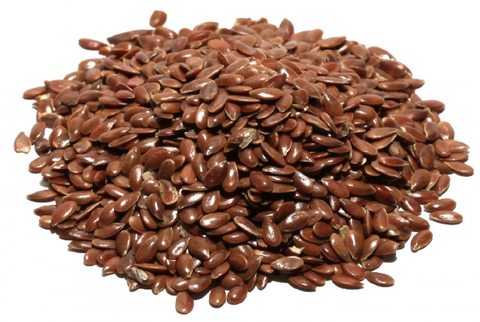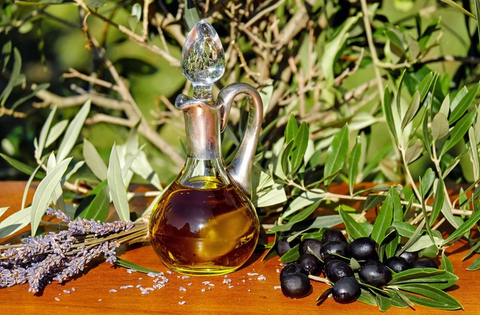According to the WHO, nearly 422 million were suffering from diabetes in 2014. The number has surely increased by now. It is also the leading cause behind other major illnesses and conditions such as kidney failure, blindness, strokes, heart attacks and more. Though there isn’t any permanent cure for diabetes, repeated researches have revealed that a regulated diet and a healthy amount of physical activity can help you keep it under control.
So, what happens when you get diabetes?
The pancreas secretes insulin – a hormone which is responsible for controlling the level of blood sugar in our body. When you have diabetes, your body does not produce an adequate amount of insulin or it cannot utilize the insulin produced. This leads to an unbalanced level of blood sugar. There are different types of diabetes and some are even found among children these days.
Why is diet important for diabetic patients?
Food is the basic source of sugar for the human body – thus when your body is unable to process it properly, you must check the intake quantity. This is the simple reason why your partner or mother or friend is constantly nagging you to not have that extra scoop of ice cream if you have diabetes. Whatever you eat, your goal should be to not let the blood sugar level go up. There are different types of sugars and some, such as those from candy are absorbed immediately. The diabetic body is also prone to heart diseases which mean one must also be careful about the intake of fat and keep their cholesterol level under check.
Below are the top 20 power foods that diabetic patients should consider and include in their diet for an improved lifestyle:
Cranberries – Known primarily to prevent urinary tract infections, cranberries can also help those with diabetes. The phytonutrients in these fruits are particularly important. Research also says that the anti-oxidants in these berries are able to reduce LDL in diabetic patients and increase HDL. Try fresh, unsweetened cranberries for best results.

Broccoli – It contains a particular compound called sulforaphane which performs anti-inflammatory functions which helps control blood sugar and prevent vessels from cardiovascular problems which is strongly associated with diabetes.

Apples – According to a study by The Harvard School of Public Health, those who consumed three to four apples a day were at a 23% lesser risk of developing type 2 diabetes as compared to those who didn’t consume it. Quercetin, a compound found in apples is also known to lower risks associated with diabetes.

Oatmeal – Filling and fibrous, oatmeal is a great option for breakfast if not entirely a “powerfood”. It is rich in magnesium which means helps in proper production of insulin. Steel cut oats are particularly beneficial for diabetic patients as they stand lower in the glycemic index.

Fish – Fish is low in unsaturated cholesterol and fat and rich in omega 3 fatty acids. This helps in lowering triglyceride levels, reducing blood pressure and inflammation. This in turn leads to lower risks of heart attacks and strokes. Certain types of fish such as salmon also aids in insulin resistance.

Cinnamon – An exotic spice, cinnamon also contains chromium, a mineral which improves the effects of insulin. It also has antioxidants and polyphenols which create more free radicals in your body protecting you from cancer and prevent inflammation thus lowering risks from diabetes and heart diseases.

Green Tea – If you are suffering from diabetes, pour yourself a cup of green tea instead of the usual coffee. Tea contains flavonoids which help blood vessels to dilate reducing risk of heart diseases. It also reduces cholesterol levels, stress and risks of cancer. Flavonoid is also an inflammation fighter. However, packed tea or drinks with tea are of no good – doctors recommend freshly brewed ones.

Legumes – According to a study in 2012, consuming a cup of legumes daily led to better blood sugar control and lower levels of blood pressure. Cannellini beans for example do not raise blood sugar levels but give you a good share of protein and minerals. Chickpeas and kidney beans are also great. The fiber in these slows down the process of glucose flow into the bloodstream preventing rise in blood sugar levels.

Spinach – Along with collards, spinach is a great choice for diabetic patients. According to a British study, subjects who consumed one serving of spinach every day were at a 14% lesser risk of developing diabetes as compared to those who had half a serving. Along with Vitamin K, spinach contains magnesium, zinc, potassium, folate, phosphorus and more.

Asparagus – Glutathione is one of the key antioxidants that fill this food. It fights a number of diseases such as diabetes and other signs such as those of aging.

Quinoa – Quinoa is a complete source of proteins and has all nine amino acids. Rich in fiber, it helps to keep blood sugar levels under control, keeping you fit and young.

Flaxseed - Alpha-linolenic acid (ALA), lignans and fibers are three of the top beneficiary ingredients of flaxseed. Some studies have revealed that it helps in lowering hemoglobin A1C in people with type 2 diabetes, in lowering blood sugar levels and LDL.

Turmeric – Curcumin, the most active ingredient in turmeric is believed to act on fat cells, kidney cells and pancreas cells, reducing inflammation and blocking cancer causing tumor. According to experts, these factors combine to act against insulin resistance, high blood sugar and more.

Avocados – Known for containing non saturated fat, avocados can work on your cholesterol levels, reducing risks of heart diseases. According to a report by The American Journal of Clinical Nutrition in 2008, women who repeatedly consumed good fats like those in avocados were 25% less likely to develop diabetes.

Olive Oil – A Mediterranean style diet which is rich in Olive oil is 50% less likely to lead to type 2 diabetes, revealed a recent study in Spain. It is rich in antioxidants and non-saturated fats.

Dark Chocolate – Chocolates contain flavoring which reduce resistance to insulin and improve sensitivity towards it, help in dropping fasting blood sugar and insulin levels. All of this contributes to lower cravings for sweets and the like – but this is only true for dark chocolate.

Yoghurt – According to a study published by The American Journal of Clinical Nutrition in 2012, yoghurt can help in preventing type 2 diabetes. Experts said that probiotic bacteria in yoghurt reduces cholesterol and created vitamins which prevents diabetes.

Nuts – Healthy for your heart and also capable of controlling type 2 diabetes, nuts are among the best choices in food. However, they are high in calorie so the quantity consumed must be under check and consumed before meals for best results.

Soy – A high quality protein which is low on cholesterol and saturated fat, soy can replace foods with solid fat. It is also a good source of fiber, alpha-linolenic acid (ALA), zinc, folate, and niacin all of which are good for diabetic patients.

Garlic – Garlic has been used for medicinal purposes for thousands of years and is said to work for heart diseases, for high cholesterol, cancer and more. It is said to help lower blood glucose levels and work on certain complications created due to diabetes.







63 comments
Leave a comment
This site is protected by hCaptcha and the hCaptcha Privacy Policy and Terms of Service apply.